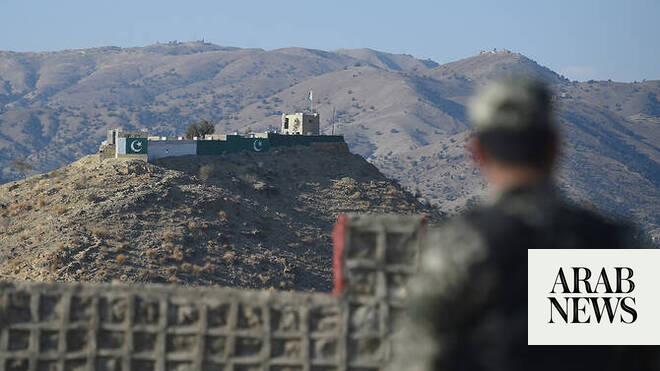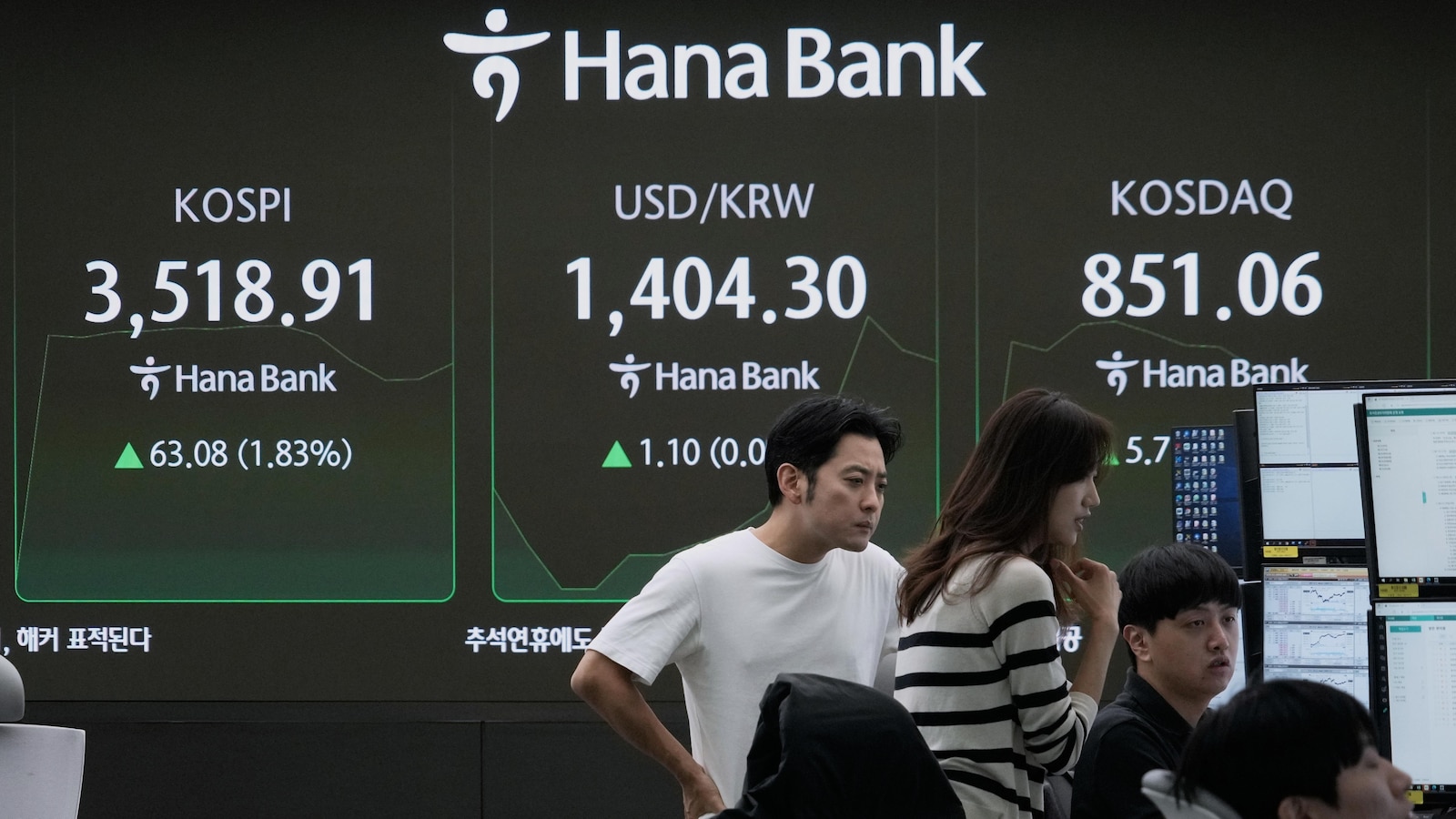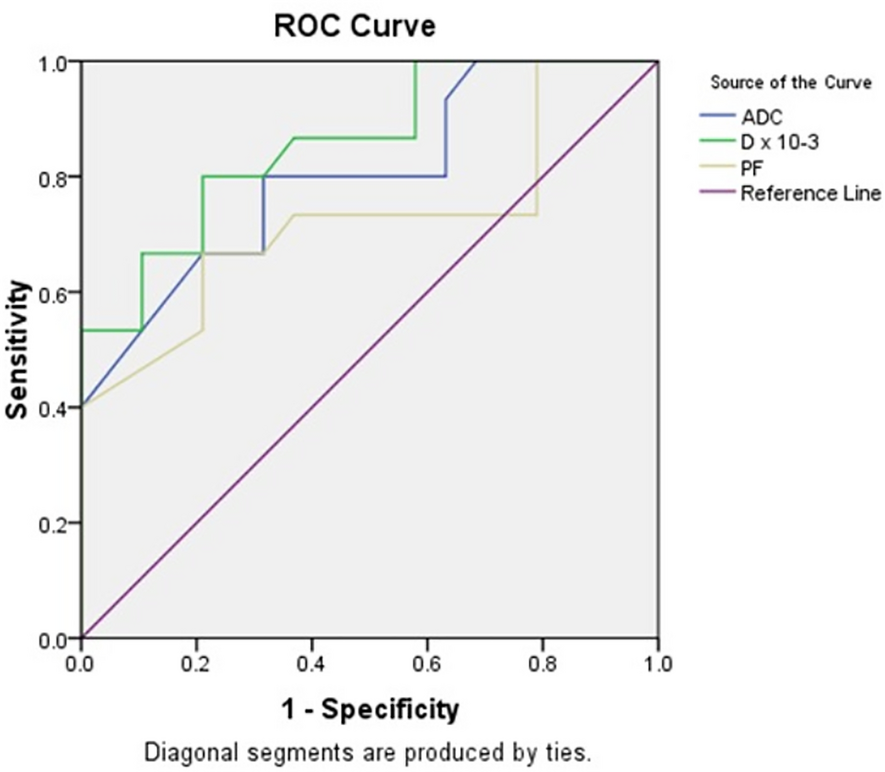Tamasha, the premier streaming app of Jazz, once again proved to be Pakistan’s leading digital entertainment platform by setting new benchmarks in digital viewership during the Asia Cup 2025. This year’s Asia Cup witnessed…
Author: admin
-

Impact of tube voltage on image quality and radiation dose in CT coronary angiography: a comparative study of 100 and 120 kVp protocol | Egyptian Journal of Radiology and Nuclear Medicine
This study was conducted with the objective of comparing image quality and radiation dose between 100 and 120 kVp CT coronary angiography. It is important to reduce the tube potential to minimize the dose administered to the patient because increasing the dose may cause several biological effects [9, 10]. However, low tube voltage increases image noise; thus, in the present study, participants with low and normal BMIs were scanned at 100 kVp and those with higher BMIs at 120 kVp to reduce image noise. Therefore, by conducting a thorough analysis and comparing our findings with other studies, we aimed to optimize the CT protocols to get optimum image quality with a reduced radiation dosage.
MDCTA has a high diagnostic accuracy, although radiation dose remains an important concern, so it is necessary to optimize the dose [9, 10]. In the current study, the effective dose, DLP, and CTDIvol were evaluated, and a significant variation was found in the comparative evaluation of radiation dosage with different tube voltage settings. When the tube potential was reduced from 120 to 100 kVp, 39% decrease in the radiation dosage was observed while maintaining the optimal image quality. Various studies have reported a reduction of radiation dose up to 52%, maintaining good image quality when kVp was reduced from 120 to 100 kVp [10]. The variation in the dose reduction in the previous studies and the present study might be because of the type of cardiac gating and the scan length [2, 9, 10]. Since most of the studies were performed using prospective gating, however, in the current study, retrospective gating was used. Typically, retrospective gating results in a higher radiation dose because of continuous exposure compared to prospective gating. Therefore, the type of ECG gating is one of the factors influencing dose reduction [13]. The present study was conducted by reducing the kVp based on BMI. This study demonstrates that even with retrospective ECG gating, which generally associated with higher radiation exposure, substantial dose reduction can be achieved through voltage optimization, making it valuable in settings where prospective gating is not feasible.
Image quality was assessed both quantitatively and qualitatively. Quantitative assessment revealed significant variations in image quality metrics across different voltage settings. Changes in the CNR and SNR were detected, indicating a substantial impact of voltage modulation on image acquisition. These findings align with those of previous studies, which reported slight reductions in the CNR with alterations in voltage settings and by adjusting the amount of mAs to different R-R intervals [2, 10]. Most of the coronary angiography requires 70–75% and 40–45% R-R intervals to get motion-free images. Low mAs can be used for 0–30 and 80–100 cycles, which will help to reduce the dose further. The present study showed a substantial decrease in the CNR and SNR at 120 kVp compared to previous studies. While previous studies suggested reductions of approximately 10–12% in CNR, our findings indicated a reduction of approximately 30%, which could be attributed to reconstruction techniques. The findings suggest that the tube voltage selection can improve specific image quality metrics [2, 9, 10]. Comparing the Hounsfield Unit (HU) readings at 100 kVp and 120 kVp settings provides intriguing information on the density properties of various tissues. We found that after switching from 100 to 120 kVp, HU values decreased consistently across the ROIs placed on various arteries (Ao, LM, LAD, LCX, and RCA). These findings suggest that higher tissue attenuation at lower tube potentials leads to higher HU values, resulting in improved image contrast. [9]
The increase in tissue density can impact the analysis of coronary plaques. Higher Hounsfield Unit (HU) values enhance the differentiation between the lumen of the coronary vessels and nearby structures, improving the visibility of both calcified and non-calcified plaques [16, 17]. When using lower kilovolt peak (kVp) settings, the HU values of intravascular contrast and surrounding plaques can rise, which may lead to an overestimation of calcified plaques and an underestimation of low-attenuation, lipid-rich plaques [18]. Studies by Takagi et al. [19] and Maffei et al. [20] indicate that higher vessel attenuation can change plaque classification, highlighting the necessity of adjusting interpretation thresholds in low-kVp imaging methods.
In addition to the CNR and SNR, noise levels are important in determining CT image quality. Our analysis indicated consistent decreases in noise across various ROIs when a higher tube voltage of 120 kVp was used [9, 10]. The observed percentage decreases in noise ranged from approximately 14.17% to 25.53%, suggesting a reduction in background noise with higher voltage settings. Our findings align with the observations of Ripsweiden et al. and Wang et al., who stated that there is an increase in image noise with decreasing tube potential to 100 kVp [2, 10]. Even though the noise levels were higher at 100kVp, the increase in HU improved vessel delineation; SNR and CNR remained significantly better ensuring that diagnostic confidence was not compromised.
Lower tube voltage protocols can increase image noise, but this can be mitigated using iterative reconstruction (IR) algorithms such as adaptive statistical iterative reconstruction (ASIR), model-based iterative reconstruction (MBIR), and sinogram-affirmed iterative reconstruction (SAFIRE) [21, 22]. These algorithms enhance the image acquisition process by reducing noise while preserving edge detail, improving CNR and SNR at lower kilovolt peak (kVp) settings. Research shows that IR can maintain diagnostic quality at 80–100 kVp while cutting radiation dose by up to 50% [23]. Although our study used standard reconstruction methods, incorporating IR or precise imaging in future protocols could further reduce noise in 100 kVp imaging, particularly for patients with slightly elevated body mass index (BMI).
Various studies have reported an increase in HU values with low tube voltage, and the noise can be reduced by using various reconstruction algorithms [9].
Alongside quantitative metrics, qualitative image assessment played a vital role in our study, as radiologists depend on qualitative assessment of images while reporting. Image quality was assessed for both 100 kVp and 120 kVp. Interreader agreement analysis demonstrated substantial concordance between observers, displaying the reliability of our qualitative interpretation. Radiologists used specific parameters, such as the delineation of the main coronary arteries as a sharp interface between the luminal contrast and wall, which helps them to identify several focal plaques and wall thickening, too. Many a time, distal contrast opacification and contrast delineation are challenging in the evaluation of pathology. Good agreement was found between the two readers, which states that the overall image quality was maintained, even though when the kVp was reduced, the optimum diagnostic image quality was maintained throughout. This robust agreement highlights the consistency and reproducibility of our qualitative assessments, which are essential for clinical decision-making. The findings of the present study can be used to tailor the protocol for coronary angiography based on BMI and reduce the exposure factor while maintaining good image quality, which will enhance patient care. Although the study was conducted in a single center, the protocol can be adapted broadly as BMI-based voltage adjustment is vendor-neutral and widely applicable.
Limitation
The study has several limitations. First, data were collected from a single center with a relatively small sample size, which may affect the generalizability of the findings. Second, retrospective ECG gating was employed, typically resulting in higher radiation exposure compared to prospective gating. As a result, our findings may not be directly comparable to studies that exclusively use prospective gating techniques. Additionally, while the selection of tube voltage based on BMI shows promise, the sizes of the subgroups were limited. Therefore, larger multicenter studies are needed to confirm the applicability of these findings across diverse patient populations. Future studies can be performed to explore the effect of tube voltage on specific patient subgroups, such as those with different body mass index or cardiac conditions, with further reduction of exposure factors.
Continue Reading
-

Inflamed Skin, Burdened Heart: A Multidisciplinary Perspective on Atop
Introduction
Cardiovascular diseases represent a major global health challenge due to their high incidence and substantial mortality. Likewise, skin diseases are highly prevalent worldwide. Despite their lower fatality rates, the lack of…
Continue Reading
-

Pakistan army says 30 militants killed in raids after attack left 11 soldiers dead
GENEVA: The UN’s environment chief insists that a landmark global treaty tackling plastic pollution remains achievable, despite talks twice imploding without agreement, and the chair suddenly resigning this…Continue Reading
-
Rice Reacts After Tuchel Aims Criticism at England Fans

Declan Rice has responded after Thomas Tuchel criticised England fans following the win over Wales.
On Thursday night, the Three Lions welcomed…
Continue Reading
-
Ceasefire Violation: Israel Shells Gaza Hours after Agreement Ratified – Palestine Chronicle
- Ceasefire Violation: Israel Shells Gaza Hours after Agreement Ratified Palestine Chronicle
- Over 150 bodies arrive at Gaza hospitals as rescue crews search rubble: report Dawn
- Israeli occupation forces open fire and block roads preventing Gazans…
Continue Reading
-

Asian shares are mostly lower following Wall Street’s pause from its feverish rally
MANILA, Philippines — MANILA, Philippines (AP) — Asian shares mostly fell on Friday, after a respite from Wall Street’s recent feverish rally. The price of gold also pulled back from record highs following recent torrid runs.
U.S. futures and oil prices were higher.
Nealy all Asian indexes were down, with the exception of South Korea’s Kospi, which climbed 1.3% to 3,596.36 as trading reopened after a holiday.
The surge was fueled by a rally of tech shares including SK Hynix, which was up nearly 7%. Samsung Electronics rose 5.4%, boosted by news that Nvidia-backed Reflection AI had raised $2 billion, raising its market value to $8 billion.
Japan’s Nikkei 225 fell 1% to 48,087.75, pulling back from big gains the previous day after data showed producer prices rose more than expected in September.
Hong Kong’s Hang Seng index shed 0.8% to 26,534.65, while the Shanghai Composite index slipped 0.5% to 3,913.98.
Australia’s S&P/ASX 200 slid 0.1% to 8,959.80. Taiwan’s stock market was closed for a holiday.
On Thursday, the S&P 500 slipped 0.3% from its latest all-time high for just its second loss in the last 10 days, closing at 6,735.11. The Dow Jones Industrial Average dropped 0.5% to 46,358.42, and the Nasdaq composite edged down by 0.1% to 23,024.63.
Gold also fell following its stellar rally this year, losing 2.4% to drop back below $4,000 per ounce, while Treasury yields held relatively steady in the bond market. They’re taking a moment following big runs driven in large part by expectations that the Federal Reserve will cut interest rates to support the economy.
Financial markets have been climbing so relentlessly, including a 35% leap for the S&P 500 from a low in April, that worries are mounting that prices may have shot too high. Concerns are particularly strong about the frenzy lifting stocks related to artificial-intelligence technology.
Dell Technologies sank 5.2% for the biggest loss in the S&P 500, but that only trimmed its surge since talking up its AI growth opportunities at an investment conference earlier in the week. The stock was still up nearly 11% for the week so far.
Tesla also weighed on the market after falling 0.7%. The National Highway Traffic Safety Administration opened a preliminary evaluation of its “Full Self-Driving” system due to safety concerns.
Those losses helped offset a 4.3% ascent for Delta Air Lines, which reported a stronger profit for the summer than analysts expected.
Delta also forecasted a range for profit during the year’s final three months whose midpoint topped analysts’ estimates. Its president, Glen Hauenstein, highlighted a broad-based acceleration in sales trends over the last six weeks, including for domestic business travel.
Such corporate reports have gained importance since they offer insights into the strength of the U.S. economy after U.S. government shutdown is delayed reports that usually serve that purpose. This is the second week where the U.S. government has not published its update on unemployment claims, for example, a report that usually helps guide Wall Street’s trading each Thursday.
In other dealings early Friday, U.S. benchmark crude oil added 10 cents to $61.61 per barrel. Brent crude, the international standard, edged up 5 cents to $65.27 per barrel.
The U.S. dollar fell to 152.74 Japanese yen from 153.05 yen. The euro rose to $1.1572 from $1.1569.
___
AP Business Writers Stan Choe and Matt Ott contributed.
Continue Reading
-

Prince Harry and Meghan Markle ask families to join fight against predatory social media policies
NEW YORK — NEW YORK (AP) — Prince Harry and Meghan Markle urged parents to stand against social media companies that they said prey upon children with exploitative algorithms as the “explosion of unregulated artificial intelligence” adds…
Continue Reading
-

Can IVIM MRI be superior to ADC in predicting aggressive subtypes of endometrial carcinoma: new insights into FIGO 2023 classification | Egyptian Journal of Radiology and Nuclear Medicine
It is prospective study conducted over a two-year period (February 2022 to January 2024) at the Diagnostic and Interventional Radiology Department of our institution. The study was approved by the research ethics committee of the Radiology Department of the Faculty of Medicine Mansoura University (Reference number of approval: MD.22.03.626) and was conducted in accordance with the Declaration of Helsinki. All participants provided written informed consent to participate in this study. Clinical trial number: not applicable. Throughout the study, strict polices were taken to ensure the confidentiality and privacy of patient data.
Thirty-four patients with histologically confirmed EC were enrolled in this study. Participants were included in the study if they were 18 years of age or older and provided written informed consent. All participants had a histologically confirmed diagnosis of endometrial carcinoma. Participants were excluded if they presented with contraindications to MRI (including cochlear implants, cardiac pacemakers, metallic stents, claustrophobia, or morbid obesity), a diagnosis of endometrial stromal sarcoma, or a history of neoadjuvant chemotherapy or radiotherapy.
All participants underwent non-contrast MRI, encompassing DWI and IVIM sequences. Histopathological diagnosis of the neoplastic lesions served as the reference standard for the study’s findings.
Two radiologists with 7 and 14 years of experience, respectively, interpreted the images using a consensus reading approach.
All patients were subject to MRI examinations using a 1.5 Tesla Siemens Symphony scanner with an abdominal coil positioned around the pelvis. Prior to the examination, patients were instructed to Abstain from food and drink for 4–6 h and maintain a comfortably full bladder.
Conventional MRI
MRI imaging T2 Fast-Spin Echo (FSE) Weighted Imaging (TR/TE, 4000–6000/100–110 ms) in two planes: Sagittal and Axial (short axis upon the endometrial cavity), Axial STIR and T1 WI sequences were acquired using a TR of 400–600 ms (ms) and an TE of 10–14 ms. The field of view (FOV) was 38 × 26 cm2, with 5 mm slice thickness, 1 mm interslice gap, and 24 slices acquired.
Diffusion weighted imaging and ADC value
DWI was carried out through a multi-section single-shot spin-echo sequence with b-values of 0, 400 and 800 s/mm2. Diffusion gradients were applied in three orthogonal directions. The imaging parameters were: TR/TE = 7000/77 ms, matrix size = 128 × 128 with same slice thickness, interslice gap, and field of view.
Initial DWI evaluation consisted of interpretation of signal intensity within the endometrial mass. Restricted diffusion was identified by a hyperintense signal on the b-800 image and a corresponding low signal on the ADC map.
ADC maps were automatically produced, followed by manual segmentation of regions of interest (ROIs) on areas of maximum restriction of tumoral tissue with careful exclusion of areas showing necrosis, cystic changes, or hemorrhage. Necrotic areas were avoided during ROI placement by using the anatomical images as a guide. ROI sizes ranged from 1 to 2.5 cm2. The final parametric values were derived from the mean measurements across all ROIs. The inter-reader agreement between the two radiologists was substantial (Cohen’s κ = 0.82, p < 0.001).
Intravoxel incoherent motion
Ten-b-value DWI sequence was acquired including (0, 30, 70, 100, 200, 400, 800, 1000, 1500, and 2000 mm2/s).
Regions of interest (ROIs) were consistently delineated on ADC maps and then applied to the equivalent IVIM maps. A biexponential model was used to calculate D, D*, and f. Color maps were generated from the IVIM model and were overlaid on anatomical reference images, with a continuous color scale ranging from low values (blue) to high values (red). D represents the true diffusivity of water molecules within the extracellular space, reflecting tissue microstructure; the color bar on the side indicates the D values, where blue represents lower diffusivity and red represents higher diffusivity. D* reflects the motion of blood water within the capillary network. The perfusion fraction (f) quantifies the proportion of tissue occupied by perfused blood Color maps of the perfusion fraction (f, %) were generated from the IVIM biexponential fitting model. These maps display the fractional volume of microvascular blood flow within each voxel. A continuous color scale was applied, with blue representing low f values and red representing high f values, as indicated by the accompanying scale bar. ROIs were drawn over the solid portion of the tumor on the f maps, referencing anatomical images to avoid necrotic or cystic regions, and mean values were recorded for statistical analysis.”
Histopathological analysis
Twenty-seven cases were candidates for total abdominal hysterectomy and bilateral salpingo-oophrectomy underwent full post-surgical histopathological analysis to determine tumor type, However the other seven cases were shifted to chemoradiotherapy following D and C only for the extensive spread of the disease beyond the pelvic cavity (four case) or due to the age and general condition of the patient (three cases).
Statistical analysis
Data were analyzed using SPSS version 15 for Windows®. Frequencies and percentages described categorical variables, with group comparisons performed using Chi-square tests. Quantitative data normality was assessed via the Kolmogorov–Smirnov test. Normally distributed data are reported as means ± standard deviations, while non-normally distributed data are presented as medians and ranges (minimum–maximum). The Mann–Whitney U test was employed for non-parametric group comparisons. A p-value < 0.05 was considered statistically significant.
Continue Reading
-
Announcement Regarding Torii Pharmaceutical’s Announcement Regarding New Drug Application for JTE-061 Cream, Aryl hydrocarbon Receptor (AhR) modulating agent, for the Treatment of Pediatric Atopic Dermatitis in Japan
OSAKA, Japan, October 10, 2025 – Shionogi & Co., Ltd. (Head Office: Osaka, Japan; Chief Executive Officer: Isao Teshirogi, Ph.D.) hereby announces that its group company, Torii Pharmaceutical Co., Ltd. (Head Office: Chuo-ku, Tokyo, Japan; President and Chief Executive Officer: Nobumasa Kondo), has issued a press release regarding a new drug application for JTE-061 Cream, aryl hydrocarbon receptor modulating agent, for the treatment of pediatric atopic dermatitis in Japan.
Below is the announcement released by Torii Pharmaceutical.
Japan Tobacco Inc. (JT) (TSE:2914) and Torii Pharmaceutical Co., Ltd. (Torii) announced today that JT has filed a New Drug Application for JTE-061 (generic name: tapinarof) cream 0.5%, a therapeutic aryl hydrocarbon receptor modulating agent, for the treatment of pediatric patients aged 2 to <12 years with atopic dermatitis.
In 2020, JT previously entered into an exclusive license agreement with Dermavant Sciences GmbH (which was later acquired by Organon & Co.) for the development and commercialization of tapinarof for dermatological diseases and conditions in Japan. JT also signed an exclusive license agreement with Torii for the co-development and commercialization of tapinarof in Japan. Under this agreement, JT and Torii are jointly developing tapinarof cream 0.5% for pediatric patients with atopic dermatitis, and Torii will be responsible for marketing the product in Japan subsequent to JT’s obtaining manufacturing and marketing approval.
In the Phase 3 clinical study conducted in Japan in pediatric patients aged 2 to <12 years with atopic dermatitis, tapinarof cream 0.5% met the primary efficacy endpoint, demonstrating superiority over vehicle. Furthermore, the safety of tapinarof cream 0.5% was confirmed during long-term treatment. JT and Torii expect that tapinarof cream 0.5% will offer a new treatment option for pediatric patients with atopic dermatitis in Japan.
In addition, in June 2024, JT received manufacturing and marketing approval in Japan for tapinaorf cream 1% (VTAMA® Cream 1%) for the treatment of atopic dermatitis in patients aged 12 years and older and plaque psoriasis in adults. VTAMA® Cream 1% has been distributed in Japan by Torii since October 2024.
ABOUT Atopic Dermatitis
Atopic dermatitis is a chronic and pruritic inflammatory skin disease. It is thought to develop through exposure to various irritants or allergens in patients with a physiological abnormality of the skin (dry skin and abnormal skin barrier function).
Forward-Looking Statements
This announcement contains forward-looking statements. These statements are based on expectations in light of the information currently available, assumptions that are subject to risks and uncertainties which could cause actual results to differ materially from these statements. Risks and uncertainties include general domestic and international economic conditions such as general industry and market conditions, and changes of interest rate and currency exchange rate. These risks and uncertainties particularly apply with respect to product-related forward-looking statements. Product risks and uncertainties include, but are not limited to, completion and discontinuation of clinical trials; obtaining regulatory approvals; claims and concerns about product safety and efficacy; technological advances; adverse outcome of important litigation; domestic and foreign healthcare reforms and changes of laws and regulations. Also for existing products, there are manufacturing and marketing risks, which include, but are not limited to, inability to build production capacity to meet demand, lack of availability of raw materials and entry of competitive products. The company disclaims any intention or obligation to update or revise any forward-looking statements whether as a result of new information, future events or otherwise.
For Further Information, Contact:
SHIONOGI Website Inquiry Form : https://www.shionogi.com/global/en/contact.html
Continue Reading
